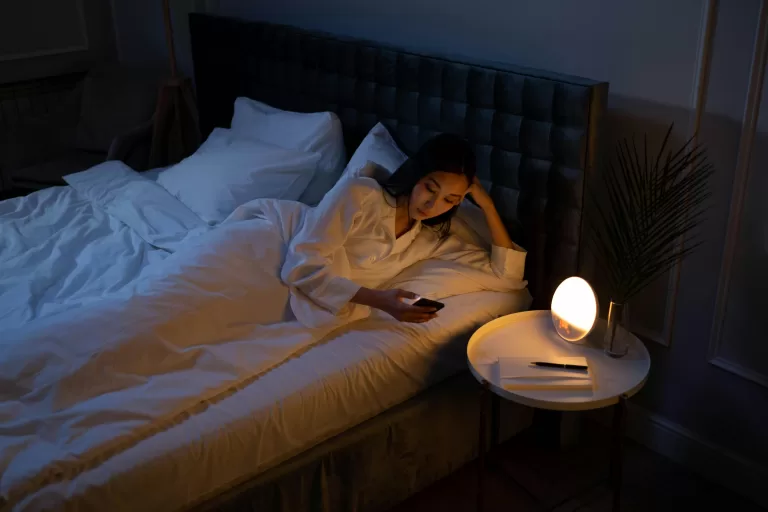Struggling to Balance Screen Time? Here’s What You Can Do
These days, we spend more time in front of screens than ever before. It may seem normal to you, as we’ve gotten used to it, but it’s interesting to note that in 2021, the average screen time worldwide reached more than 6 hours a day – that’s almost a third of the day! And if you think it’s just kids, you’re mistaken: research has shown that adults, especially parents, are also caught up in the digital world, spending an average of 7 hours a day in front of a screen. The screen has become our virtual space where we work, communicate, learn, and entertain ourselves.
However, it’s not all so innocent. Excessive screen time is linked to a long list of problems – from sleep disturbances to worsening mental health. The statistics are alarming: nearly 1 in 4 Americans suffer from sleep issues due to excessive time spent in front of screens.
Studies have shown that our brains change with prolonged screen time – attention becomes scattered, and memory ability weakens. And when you add the impact on our relationships, social connections, and physical health, it quickly becomes clear that screen time is not just a habit but a potential danger.
It’s never too late to change our habits. Simple strategies that don’t require a complete rejection of screens can help us achieve balance.
The Best Strategies to Reduce Screen Time
Enjoy a Screen-Free World
When you think about a day without technology, you might think it’s nearly impossible – but try it! Or imagine a day when you don’t check emails, read news online, or scroll through Instagram. It seems tough, but spending a day in nature without screens is one of the best strategies to reduce screen time.
You might be surprised how refreshing it is to disconnect and spend the day in nature, whether it’s hiking in the mountains, having a picnic by the lake, or simply taking a walk on forest paths. Nothing relieves you more than fresh air and a natural environment. According to mental health experts like Dr. Richard Ryan, even a simple walk in nature is proven to reduce stress and improve well-being. Instead of staring at screens, you’ll earn peace of mind and a fresh perspective on the world around you at every step.
Set Boundaries
When it seems like phones and apps overwhelm us, it’s time to remember a simple yet effective strategy to reduce screen time : set boundaries. Have you ever had someone call you in the middle of the evening or send a message that you feel you must read immediately, even when you’re trying to unwind after a long day? Even in a world where we are expected to be always available, it’s crucial to set clear boundaries.
A strategic approach to setting boundaries also includes communicating with those close to you. It’s completely normal to want to stay in touch with friends and family, but you need to make sure you’re not addicted to constantly checking messages. According to psychologists like Dr. Adam Alter, who studies the impact of technology on mental health, excessive device use is linked to high levels of anxiety. By setting certain hours as unreachable, we’re actually more present – both for ourselves and for those who truly matter in our lives.
Practice Self-Control and Discipline
This isn’t just about turning off the screen. It’s about taking control of your life. When we talk about reducing screen time, we can’t avoid the fact that it’s all about discipline and self-control. At first, it may seem like a small challenge, but each of us is capable of taking small steps that lead to greater balance in life. Why? Because it starts with a simple decision – to set limits and stick to them.
Consider when it’s best to digitally “cleanse” – this means screen-free time to be fully present in your environment. Maybe it’s mornings when you simply want to enjoy the silence with your coffee and listen to your thoughts. Or maybe it’s evenings when you want to focus on family or a book, not scrolling through social media.
And if you need some help, use apps that remind you of your limits. Research conducted at Harvard shows that when people start setting boundaries, they improve their productivity by as much as 25%.
Create Screen Balance Zones
The screen almost has us addicted – every moment is an opportunity to glance at the phone, whether during meals, on the train, or in a waiting room. We’ve almost forgotten what it was like before, when we would just start a conversation with a neighbor or a random passenger while waiting in line. Today, it seems as though the screen locks us into its world, and we disconnect from the real world happening right in front of us.
If you want to stick to strategies for reducing screen time, start by creating your own “screen balance zones.” Set aside free time that doesn’t involve screens – whether during a train ride, in the bathroom, or while in a waiting room.
Manage Notifications for Better Focus
In a world where notifications pop up several times a minute, it’s almost impossible not to feel like our phones pull us out of reality. Someone is always messaging, a new email appears, or you’re playing a new game – and it constantly rings. Strategies for reducing screen time primarily involve calming these distractions, which is not only necessary but also extremely beneficial for your productivity.
Do You Really Need More? Here’s How To Stop Being Materialistic
So take the time to organize your notifications. Try to only allow notifications that are truly important – emails, calls from loved ones. Social media, games, and various apps that bombard you with updates can wait. You’ll find that by doing this, you’ll reach for your phone less often, as you’ll have more control over what truly encourages you to interact, rather than just mindlessly scrolling through the screen.
Revamp Your Social Media – Filter Content That Truly Enriches You
When you ask yourself what social media brings you, don’t be surprised if you find that, in the end, you mostly spend your time comparing yourself or feeling like you need to be “always available.” To truly master strategies for reducing screen time, pay attention to how you organize your social media.
What if you stopped following anyone who doesn’t inspire you or bring value to your everyday life? Take a look at who you’re following on social media and consider which accounts inspire, inform, or give you real, positive advice. Get rid of the content that only leads you to compare yourself to others.
Let’s Go Back to Screen-Free Games – Parents as Role Models
If you’re a parent, you know how much your actions influence your children. They don’t just watch what you say, but mostly what you do. And if we find ourselves in the world of screens every day, it’s no surprise that our youngest ones will simply adopt the same habit. Strategies for reducing screen time include becoming role models who show children there are fun options that are not digital.
Think about how you entertained yourself before phones and apps pushed you to scroll constantly. Look back at times when kids played with peers in the yard or spent time outdoors – without stress or interruptions.
Unresolved Childhood Trauma Signs Most People Overlook
You can ask yourself how your grandparents spent their free time when technology wasn’t available and share these stories with your children. Make it fun and interesting! Encourage kids to explore creativity through art, reading, or show them simple games they can play together outdoors. By showing them how to have fun without a screen, you’ll teach them valuable skills – from creative thinking to more genuine ways of connecting with others.
Move and Unwind
Have you ever noticed how your phone suddenly ends up in your hands when you feel bored, stressed, or just need to fill a quiet moment? Strategies for reducing screen time often include realizing that screens are not necessarily the solution to moments when we feel lost or overwhelmed. In fact, excessive scrolling on your phone or tablet can just be another way to avoid our feelings and needs.
Stop Wondering! Here’s How to Spot ADHD Symptoms in Adults
So, instead of diving into the endless stream of content when you feel distracted, try something simple yet effective: move. Take a short break, simply stand up and walk, or briefly clear your mind through meditation or music. Believe me, a moment without a screen can help you more than the next hour scrolling on Instagram.










